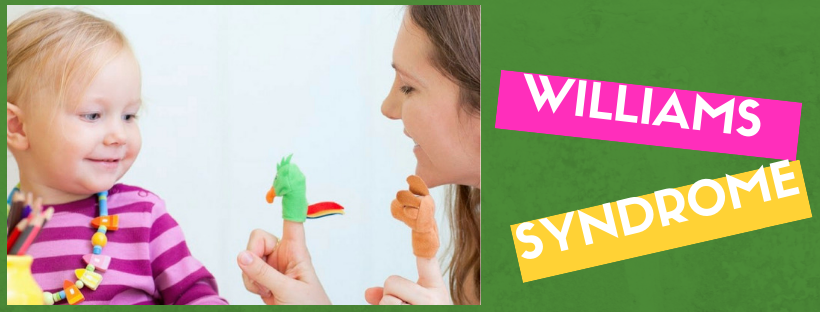Best Treatment for Williams Syndrome in Bangalore | CAPAAR
Williams Syndrome is a genetic condition characterized by unique facial features, delayed development, learning problems and certain personality traits. People with William Syndrome tend to have cardiovascular disease, connective tissue changes and endocrine abnormalities.
Growth abnormalities are also common: – William Syndrome may cause poor growth in childhood and most adults with the condition are shorter than average. William Syndrome occurs in about one per 7500 births. It may also be known as William – Beuren Syndrome
Causes:-
- William Syndrome is caused by a deletion or missing piece of a region on chromosome 7.
- We have 46 chromosomes total arranged in to 23 pairs of 2. We inherit one copy of each chromosome in each pair from our mother and the other copy in each pair comes from our father.
- Within our chromosomes are segments of DNA (Genetic information) known as genes. Our genes are like instructions that tell our body how to form and function properly. We have over 20,000 genes in each cell of our body.
- Individuals with William Syndrome are missing a portion of chromosome 7 that typically includes several genes. These missing genes or “instructions” results in the findings known to be common among people with William Syndrome.
- William Syndrome is usually caused by a random genetic mutation or error in chromosome 7. This means that most people with William Syndrome have not inherited the condition from a parent. People with William Syndrome have a 50%chance of passing the condition on to each of their offspring.
Symptoms:-
- More serious featuresof William Syndrome is cardiovascular disease :
1. Narrowing of various blood vessels is common :-
a. Peripheral pulmonic stenosis
b. Supravalvular aortic stenosis , which can lead to increased blood pressure.
- Arrhytmia ( irregular heart beat )
- Cardiac Failure.
Other common features:-
- Facial Features :-
- Full Cheeks
- Wide mouth
- Prominent lips
- Small jaw
- Large ears
- Short / upturned nose
- Epicanthal folds
(Vertical skin folds that cover the inner corners of the eyes)
- Feeding difficulties in infancy, often leading to poor growth
- Shorter than average height
- Low body tone (hypotonia) and hyper extensible joints, which may result in developmental milestones such as sitting and walking.
- Unique personality: overfriendly (lack of “stranger danger”), attention problems, excessive empathy, specific phobias, anxiety.
- Sleep problems
- Speech delay in early childhood, although speech later becomes a relative strength.
- Intellectual disability, usually in the “mild” range.
- Endocrine abnormalities: Elevated calcium level ( particularly in infancy ), hypothyroidism, early puberty, diabetes in adulthood.
- Farsightedness and or eyes which do not align
- Chronic ear infections and or hearing loss
- Dental abnormalities, such as poor enamel and small or missing teeth.
- Scoliosis
- Unsteady gait / tremor in adulthood
Diagnostic Test:-
- Fluorescence in situ hybridization
- Real time quantitative PCR
- Genomic microarray analysis
- Heterozygosity Testing
- Electrocardiogram
- Echocardiogram
- Aortography
- Ultrasonography
- TC – pertechnetate thyroid scintigraphy
- Thyroid function test
- MRI
- Polysomnography
Medical Management:-
- Early intervention program
- Special education programs
- Vocational training to address developmental disabilities
- Speech therapy
- Physical therapy
- Occupational Therapy
- Psychologic evaluation
- Psychiatric Evaluation
- Behavior Counselling – Manage behavior problems
- Psychotropic Medication – for attention deficit disorder and anxiety
- Surgery – Supravalvualr aortic stenosis
- Rx of hypercalcemia – Diet modification, Oral corticosteroids, IV pamidronate
- Corrective lenses – hyperopia
- Patching one eye of surgery – strabismus
- Tympanotomy tubes – Glitis media
- Dental cleaning every 3 months
Physiotherapy Management:-
Typical areas of weakness found:-
- Trunk / core
- Shoulder
- Hand
- Hip
- Foot and ankle
Therapeutic exercises used to treat the above weakness include :-
- Strengthening
- Stretching
- Neuromuscular Re-education
- Neuromuscular stabilization
- Functional training (self care and home management)
- Functional training in Job/School/play
- Devices and equipments
- Abdominal Exercises – Transverse abdominal obliques , lower abdominals
- Back extensors
- Latissimus Dorsi
- Physioball activities for trunk and core
If you have any questions to ask about Best Treatment for Williams Syndrome in Bangalore ! Or Are you still worried and confused about any syndrome, to find out more.
Other popular articles by Best Treatment for Williams Syndrome in Bangalore | Dr. P. Sumitha Hemavathy (PT)

